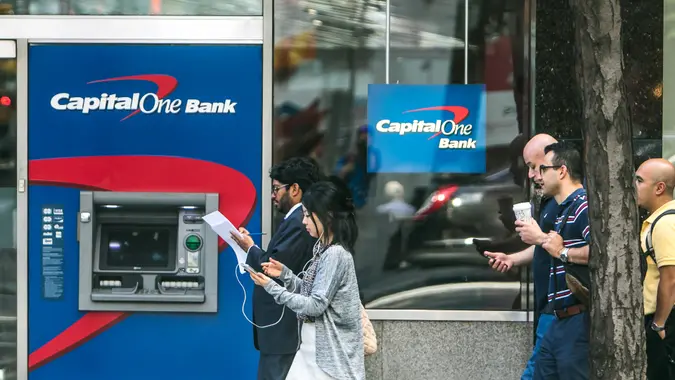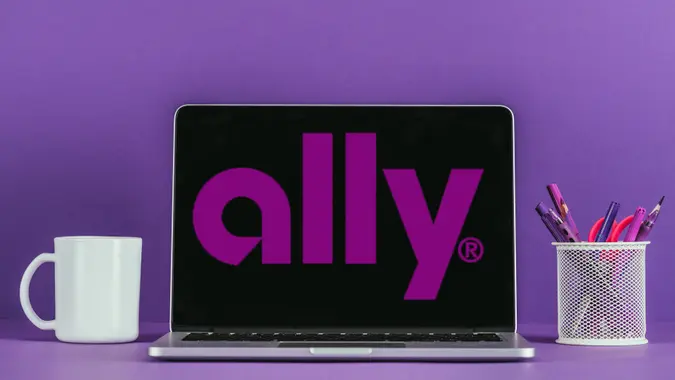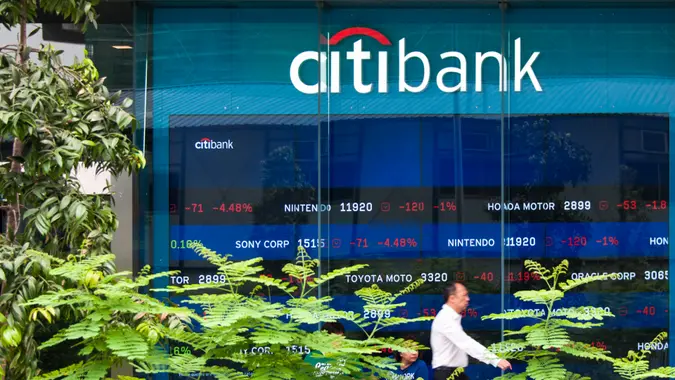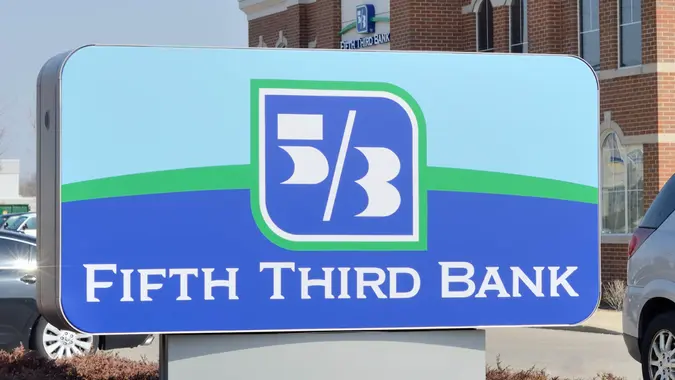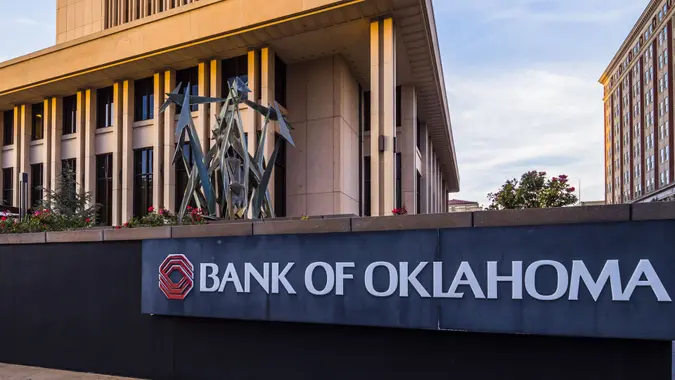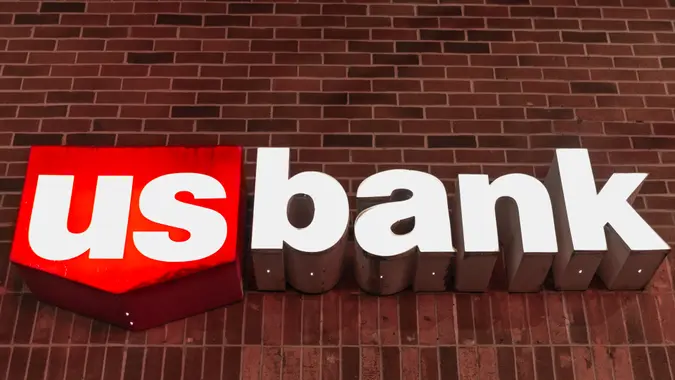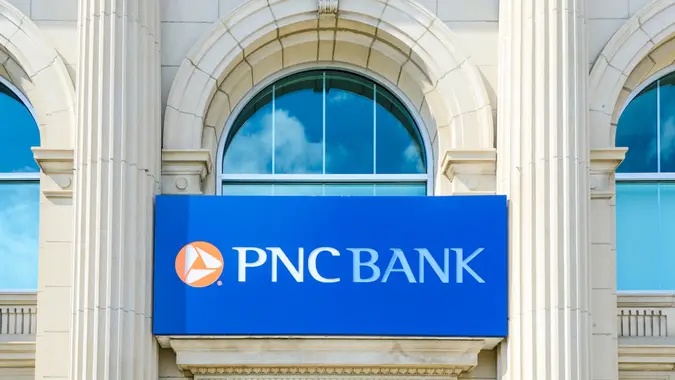I’m a Banking Expert: Here Are the Banking Trends I’m Expecting To See in the Next Year

Commitment to Our Readers
GOBankingRates' editorial team is committed to bringing you unbiased reviews and information. We use data-driven methodologies to evaluate financial products and services - our reviews and ratings are not influenced by advertisers. You can read more about our editorial guidelines and our products and services review methodology.

20 Years
Helping You Live Richer

Reviewed
by Experts

Trusted by
Millions of Readers
As 2024 comes to a close, consumers may be wondering what 2025 has in store for the banking industry — and for good reason. Be it increased AI usage or the incoming administration, the marketplace is shifting in real time.
That’s why GOBankingRates spoke with Jordan Sternlieb, senior partner and leader of West Monroe‘s banking practice, to find out the trends he is expecting to see in 2025.
Increased Digitization in Midsize Banks
Midsize and regional banks serving businesses and corporations are known for their more personal, human touch than are larger, consumer-focused retail banks like Chase and Wells Fargo.
But, according to Sternlieb, midsize banks are about to undergo a digital shift.
“Human touch may be a bit overrated in the current environment,” he said. “People want to do things on their own time and on their own terms, and there’s less need for a cost-heavy, human-heavy model.”
Midsize banks will heavily digitize and further incorporate AI in order to compete with each other, or they “will be acquisition targets and cease to exist,” Sternlieb added.
He also pointed out that while some customers enjoy a personalized, human interaction, AI will be evolving to ensure computer-generated interactions feel more personal and human. He noted that the human component will still be available — but, blended with evolving technologies, should become less necessary.
Upskilling of Employees
Since, regardless of size, banking will become more digitized across the board, the talent within the industry will require different skills.
“There will need to be more folks that can manage, implement and maintain digital systems, and less folks that are doing manual operations and client-facing work,” stated Sternlieb.
The workforce will need to be upskilled and/or re-trained as “banks compete for talent that understands the intersection of financial services and technology,” he explained, perhaps through re-shoring or off-shoring.
While this will not necessarily reduce the number of employees, it will favor those with more advanced capabilities and could widen economic inequalities.
Leveraging Data
“For an industry with so much data, there is not an industry that does less with it than banks,” stated Sternlieb. But this is about to change.
“There’s a big trend in banks investing in data platforms and structures, but getting the client-facing folks to leverage that to be more effective with prospecting or [with their] existing portfolio is something we will see,” he continued. “They can figure out which customers give the bank the best opportunity to capture revenue within it or improve relationships outside it.”
The recent arrival of open banking and adoption of fintech technologies will purportedly enhance customer experience as it accesses more and more data about individuals, though security concerns loom.
Strengthening Cyber Resilience
Sternlieb explained that, unsurprisingly, the biggest financial and reputational risk for banks are cyber threats. With increased digitization comes increased danger of fraud, social engineering scams and account takeovers.
Banks are, therefore, investing in proactive measures in an attempt to guard against such threats.
“This will be the greatest R.O.I. If a cyber event hasn’t happened yet, it’s inevitable for banks of all sizes,” sSternlieb said. “Proactive measures like IT-OT collaboration, regulatory preparedness and risk mitigation strategies are essential for protecting customer data and ensuring operational stability.”
Less Regulatory Oversight
The 2024 election of Donald Trump brings with it fiscal policy that will result in less regulatory oversight for banks.
While this is less favorable when it comes to consumer welfare, “Banks should expect a more favorable environment to work and invest in, not an administration that will make it more difficult for them,” Sternlieb said.
This is because the Basel Endgame capital requirements could be rolled back or scrapped altogether, potentially encouraging M&A activity.
“There’s consolidation recently where banks are buying other banks,” stated Sternlieb. “The deal model will look more appealing in a lower rate environment.”
The decreased competition for consumers could lead to higher fees, lower interest rates for depositors and limited access to branches — particularly in underserved communities.
Editor’s note on election coverage: GOBankingRates is nonpartisan and strives to cover all aspects of the economy objectively and present balanced reports on politically focused finance stories. You can find more coverage of this topic on GOBankingRates.com.
 Written by
Written by  Edited by
Edited by 





